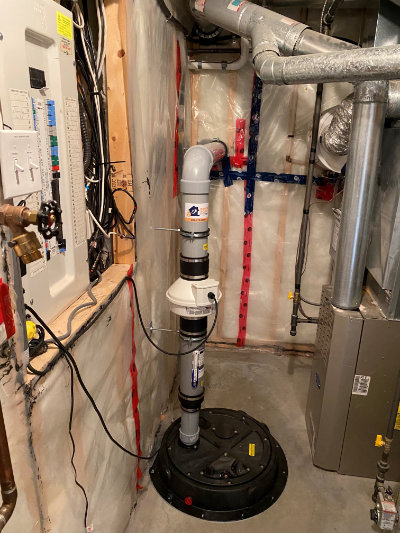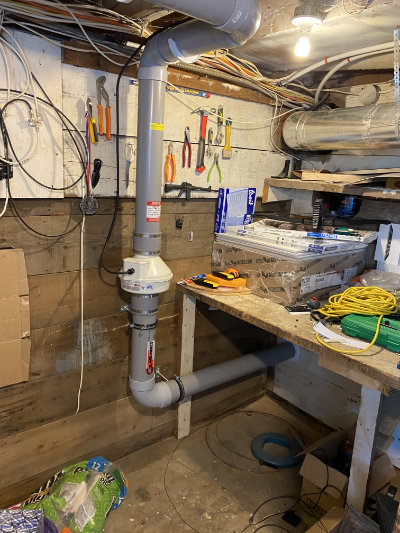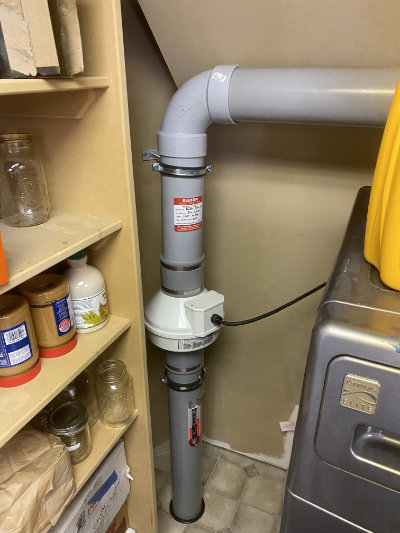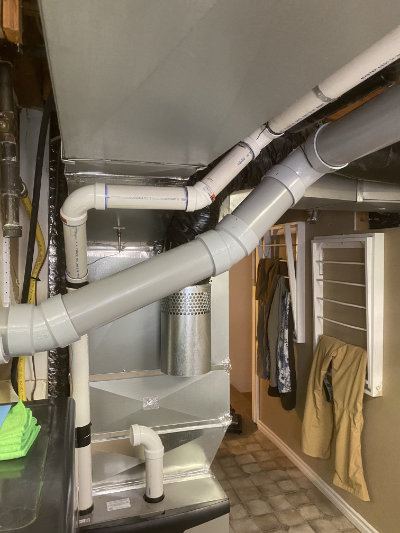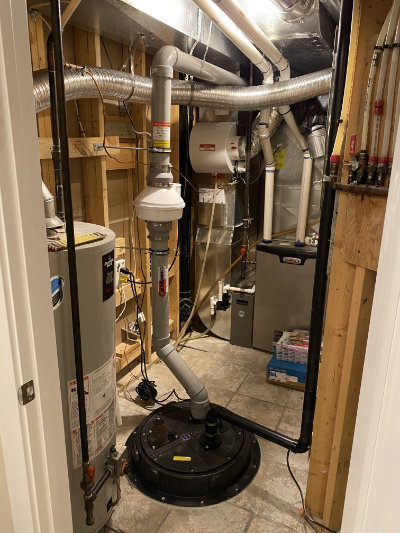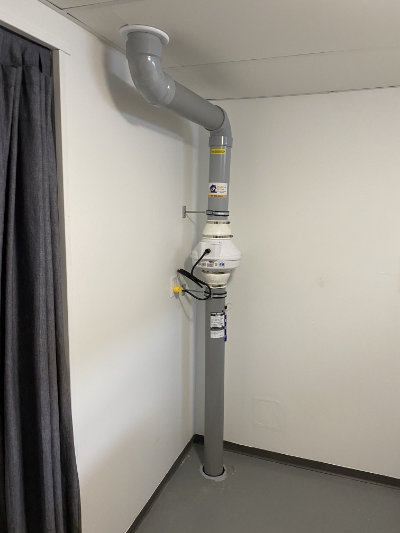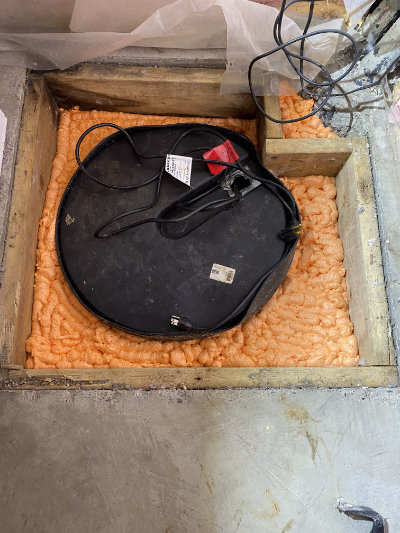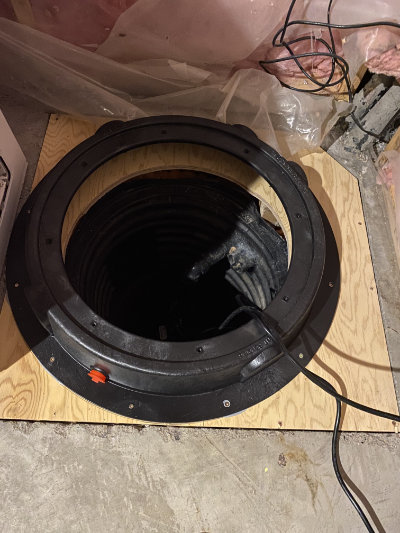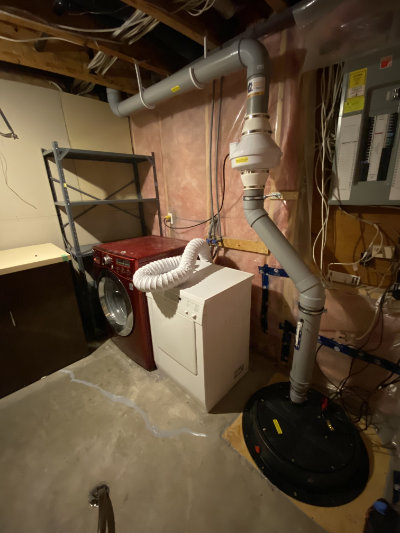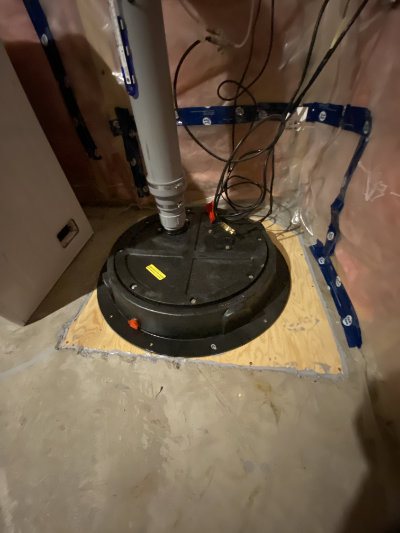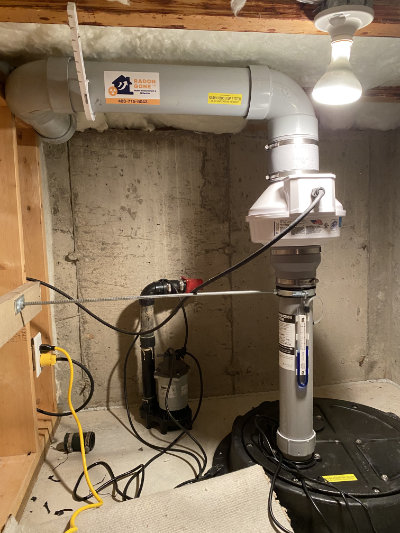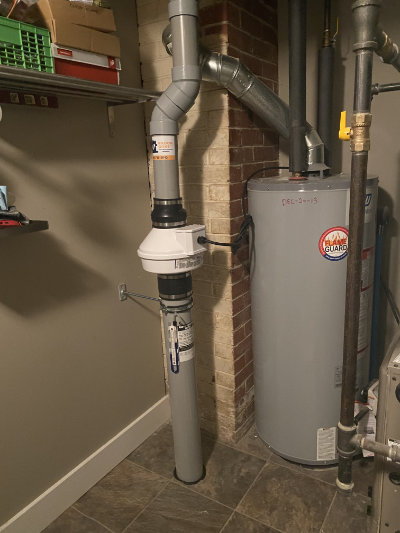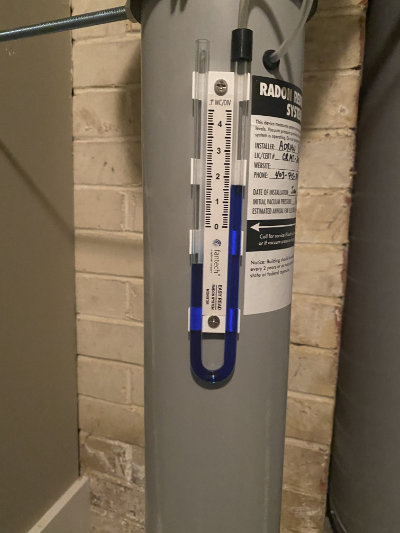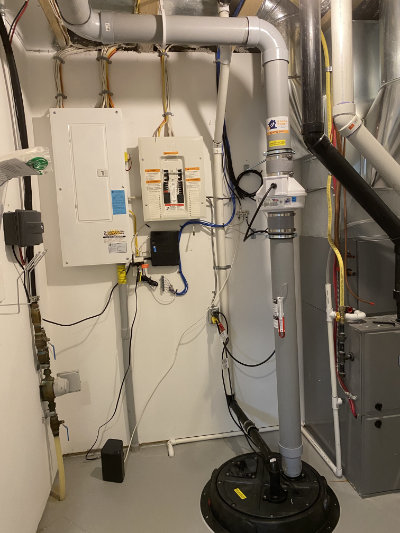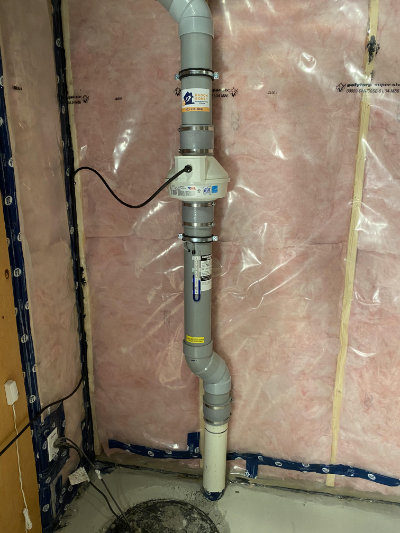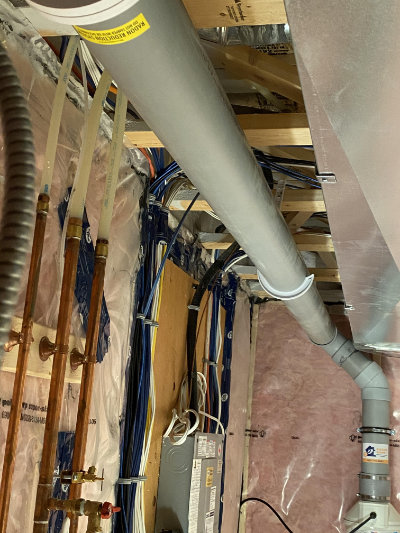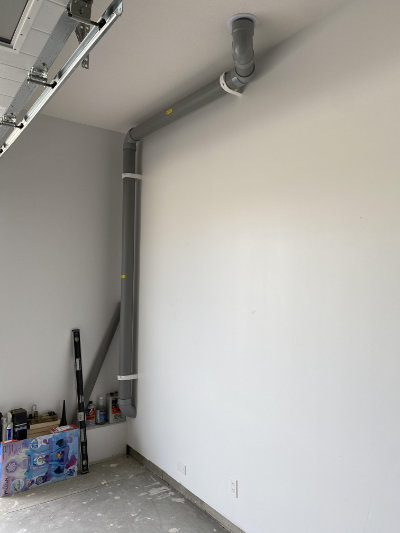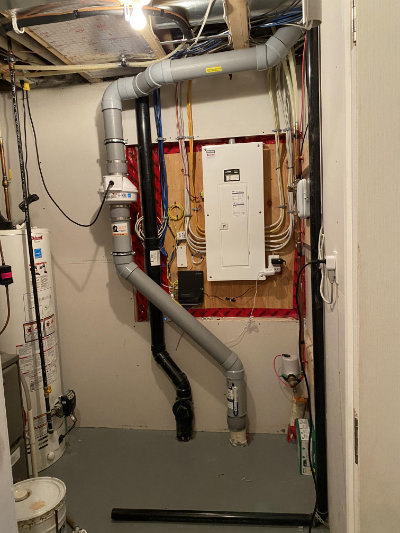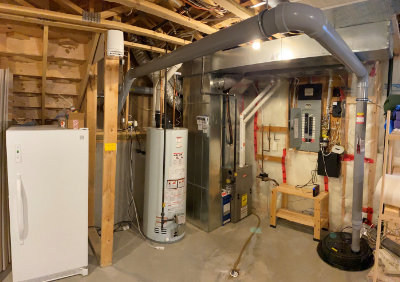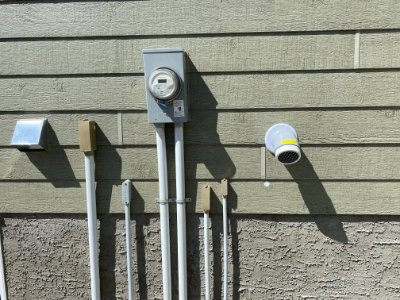Mitigation
My radon levels are high! Now what? How can I reduce them?
Did your test results come back higher than you would like them to be? No need to worry! Radon levels can be reduced up to 95% by using proper sealing and mitigation techniques. Our C-NRPP certified Radon Mitigation Professionals offer onsite consultation and a free quote. As part of the in home consultation we will walk you through the process of what is involved in a mitigation system. A typical mitigation installation process generally takes no longer than a day to complete.
Mitigation Techniques
The sole purpose of Active Soil Depressurization (“ASD”), most commonly known as mitigation, is to reduce radon levels in your home to below the Health Canada guideline of 200 Bq/m³. In most cases we are able to reduce your radon levels down below 100 Bq/m³ and even better, some mitigation systems can reduce to levels between 10-30 Bq/m³, the equivalent to levels found in outside air.
The most common mitigation method used to remove radon is a Sub Slab Depressurization (“SSD”) system. Generally, the system will be installed in the mechanical room. The exact location will be discussed with the homeowner as each installation is unique. A hole is drilled through the slab to access the material underneath the slab, a suction pit is created to allow for increased suction under the slab. 4” PVC piping and a fan is installed which will be vented to the outside, once outside the radon dissipates almost instantly to safe levels.
A Sump Depressurization (“SD”) system uses the existing sump barrel and the associated weeping tile to remove the radon from underneath the slab. The sump lid is replaced with a radon approved lid and the piping and fan are attached to the lid. Each lid is installed so that it can be removed for pump maintenance and when reinstalled the integrity of the mitigation system is not compromised. Once again the piping is vented to the exterior of the home where the radon can dissipate to safe levels.
Mitigation Process
- Our C-NRPP professionals will start by performing diagnostic testing in the basement, this ensures that the fan installed will be sufficient enough to remove the radon from underneath the slab.
- Any accessible radon entry points will be sealed to ensure the maximum system efficiency. Common radon entry points are sump barrel, water line entry from underneath slab, cracks in concrete and underneath bathtub.
- A 5” hole is drilled in the mechanical room, or the location as determined by the homeowner. This is where the mitigation piping and fan will be installed. Once drilled all necessary piping and correctly sized fan will be installed and vented to the exterior of the home.
- All mitigation systems will be installed in accordance to C-NRPP standards. This is the standard as recommended by Health Canada.
- Once the mitigation system is up and running our C-NRPP professionals will ensure the system is working correctly by conducting additional tests and verifying that all radon entry points have been sealed properly.
- After the installation is complete and the system is running a Continuous Radon Monitor will be actively collecting radon levels for an instant indication that the system has reduced the levels to below the Health Canada action level of 200 Bq/m³.
- As part of the mitigation process we will complete a backdraft test on all CO2 emitting appliances.
- To ensure the mitigation system is working as designed and that the levels have been reduced a long term test will be supplied. The test is to be conducted in the winter months for a minimum of 91 days. This test includes a return envelope to the lab and a complete lab report.
Contact us for your mitigation quote
